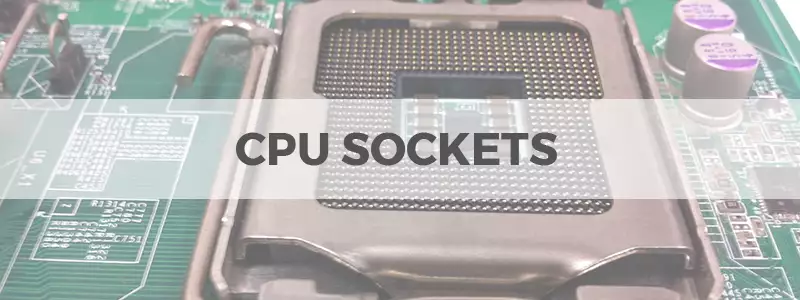Have you been scrimping and saving for a new CPU? You'll be in for a bit of a nasty surprise once you realize that you also need a whole new motherboard, just because those pesky CPU sockets just keep on changing. But why does this happen?
I mean, we've been using the same style of power outlet for a hundred years even though our technology has improved by leaps and bounds. But we can't seem to even make it two years without our CPU sockets changing. So we went a quest for answers. And we'd like to thank Matthew Hurwitz and Robert Hallock from AMD for their assistance.
Differences between PGA and LGA sockets
It first helps to understand that each pin on the CPU is hard-wired for a certain purpose. Some of them can be for power delivery, others are for transmitting data, and each data pin is further wired to just one other motherboard bus, such as PCI Express, or USB. Finally, you might have some pins that are reserved for future use, in case the CPU manufacturer wants to add more functionality down the road.
For example, AMD did this by using some extra reserved pins to add PCI express 4.0 support in Zen 2. So right away you can see that the pin layout is designed without a whole lot of wiggle room for changes in the platform. Even if it does have some reserved pins.
A faster bus somewhere else on your system, a new USB revision for example, might require more pins for both power and data than your current socket has. Necessitating an overhaul and a new socket design.
But even if you could technically use the existing socket with new features, power draw can be real issue. This is a suspected reason why Intel had to increase its pin count from 1151 to 1200 for its new 10th Gen processors; as the new processor design was suddenly taking a lot more power.
Adding more pins can help with power delivery, but it also forces users to buy new motherboards. And although it's easy to characterize this as a money grab, manufacturers are legitimately concerned that dropping a much more power-hungry CPU into an existing board could cause real problems for end users. Because the power delivery systems on older boards may not be designed for processors with a higher TDP.
So, changing sockets can force motherboard manufacturers to incorporate VRMs, that can support increased power demand instead of running the risk of users dealing with blue screens. Especially if they're trying to overclock.
Similarly, the faster and faster you go with things like memory, USB and PCI Express speeds, the more that signal integrity becomes an issue. This means that the motherboard might have to be built with more stringent standards, such as a thicker PCB with more layers, to insure speeds are up to par and interference isn't a problem. Meaning that, again, CPU manufacturers will switch out a socket to make sure that their new CPUs are being paired with boards that measure up to its current spec.
And it may sound counterintuitive but there's actually a consumer friendliness aspect to socket changes. A chip maker may want to try and make the upgrade path as clear cut as possible.
For example, the fact that new CPUs compatible with older sockets often need a motherboard BIOS update. And an old processor just to apply it. There are huge sources of frustration here for many users.
The chip makers know this, so they may choose to just change sockets to reduce consumer confusion and frustration. Especially as more mainstream users might be caught off guard by the need to flash a BIOS in order to use a newer CPU. Especially as this often isn't clearly marked on a product's packaging or web page.
A similar conundrum faced AMD with its recent Zen 3 chipset controversy. As they were originally going to require all new chipsets on the same AM4 socket. The problem was that, when Zen 1 came out it was paired with a 16MB BIOS ROM. And these chips were barely large enough to store the required firmware, as larger chips were a lot more expensive. AMD didn't want to have to remove support from older chips from the BIOS so, it decided to transition to a new chipset with a 32 meg BIOS chip instead was more reasonable.
AMD backtracked on this largely due to community feedback. But now they're also running the risk of users updating their BIOS only to realize that their existing CPU is no longer compatible with their motherboard because the BIOS chip is too small to support every existing AM4 processor.
Of course, forcing upgrades is also problematic in and of itself because consumers usually aren't happy about having to spend more money. But it's a trade off that chip makers are often willing to accept to avoid the other issues we just discussed. So, you might want to think about putting away a little more money for your upgrades since you probably don't need that extra DLC for Goat Simulator anyway.


No comments yet